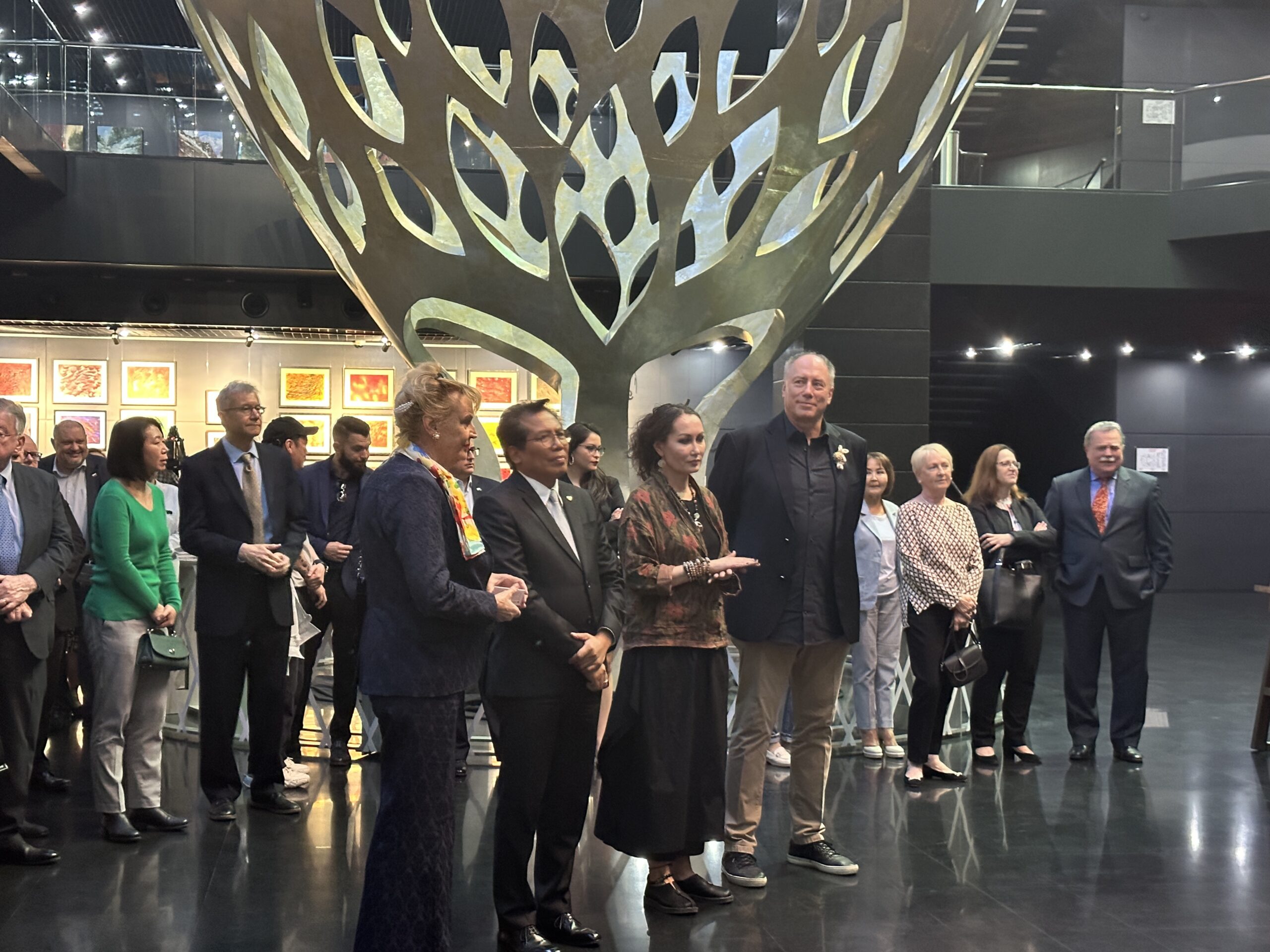ASTANA – Willy Kempel, an artist and an acting ambassador of Austria to Kazakhstan, discussed his art and vision related to modern communication in a new The Golden Key to Life exhibition in Astana on May 24.

Willy Kempel explores the idea of communication in modern days through this installation. Photo credit: The Astana Times
The artist first, ambassador second, are the right words to describe Kempel, who has incorporated art into his diplomatic career, showcasing his works in Congo, Geneva, Brussels, Doha, Tel Aviv and Astana.
By using art and storytelling, Kempel aims to express the energy of life and make a shift in people’s minds needed for real action in finding the key to life to happen.
“My main idea is to communicate through art, through poetry. That’s why I also write poetry, write theater plays. I have also given master classes in all the places where I have exhibited. I plan to hold a workshop here as well,” said Kempel.
The exhibition presents 120 pieces made in 15 years, with some presented for the first time. The highlight of the exhibition is a panel showcasing different wooden SIM cards made with the Tunisian artist Leila Elhaj in Qatar.

According to the artist (R), art is a strong ally in helping to find the key to life. Photo credit: The Astana Times
In the information age, technology connects people to each other as never before, yet the downside to that is that public awareness sometimes degrades from information overload, disconnecting people’s notions and feelings.
“What you see behind me is a symbol of communication. The wooden panels are carved in the shape of SIM cards, symbolizing it. But communication is both positive and negative. The negative one is that maybe we spend too much time on the Internet,” said Kempel.
Kempel elaborated on the general theme behind the objects, images and signs in his art. People do not see themselves as active agents in their own life-building, and finding the key to life is what all people want. Art is a strong ally in this endeavor, according to Kempel.
“My own exhibition is my own energy. The key to life is what we all carry in ourselves. I think we just have to find it. We can help each other to open to it. Everyone can find their own key and everyone can be the artist of their lives,” he said.
Kempel has a great feel for shape, form and scale, reflected in his art, according to Leila Mahat, artist and chairperson of the curatorial board of Kulanshi Contemporary Art Center.
“You just have to see it and you will understand everything. We don’t need any translation, we don’t need any explanation. It is the emotion itself, it is a feeling itself. It is alive!” she said.
Things evolve, and the art gets complicated, but especially with abstract art, the interpretation should be left to the viewer, according to Mahat.
“I think especially abstract art doesn’t need any explanation. It’s just from the very first view you can understand [whether] you like it or not. Is it yours or not? And I see the people carefully looking into your paintings for a long time, trying to understand, trying to feel it, and it shows a lot, trust me,” she said, addressing Kempel.
The exhibition is open to the public at the Palace of Peace and Reconciliation.


